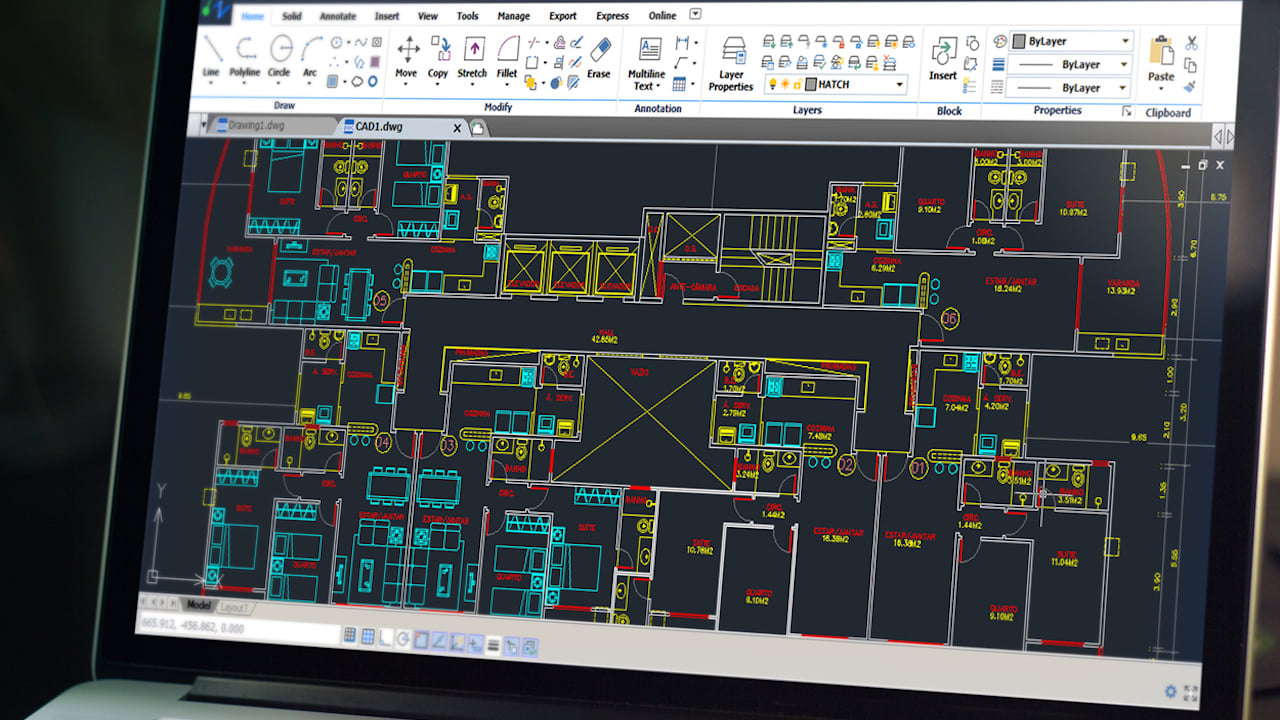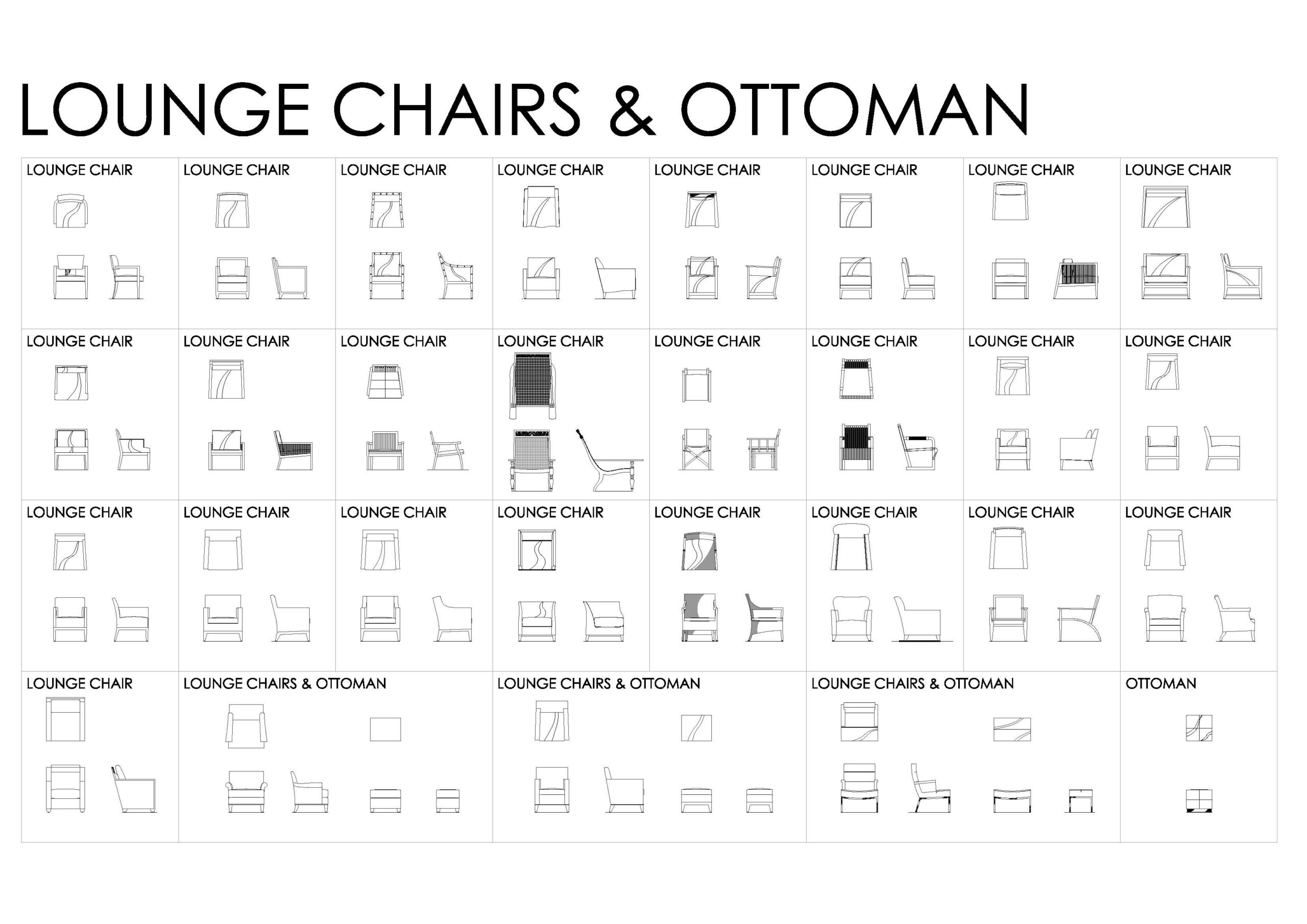Understanding Lounge Chair Design

Lounge chairs are essential furniture pieces that provide comfort, support, and style to any living space. Their design encompasses a blend of functionality, aesthetics, and ergonomics, creating a seating experience that caters to various needs and preferences.
Types of Lounge Chairs, Lounge chair autocad block
Lounge chairs come in various styles, each offering unique features and benefits. The most common types include:
- Armchairs: These chairs feature armrests and are typically designed for individual use. They offer a comfortable and relaxing seating experience, ideal for reading, watching television, or simply enjoying a quiet moment.
- Recliners: Recliners are known for their adjustable backrests and footrests, allowing users to customize their seating position for maximum comfort. They often feature a lever or button mechanism for easy reclining, making them perfect for relaxation and rest.
- Accent Chairs: Accent chairs are primarily decorative pieces that add a touch of style and personality to a room. They can be upholstered in various materials and designs, making them a versatile addition to any living space.
Materials in Lounge Chair Design
The choice of materials plays a crucial role in determining the style, functionality, and durability of a lounge chair. Common materials used in lounge chair design include:
- Wood: Wood is a popular material for lounge chair frames due to its natural beauty, strength, and versatility. It can be stained, painted, or left natural, offering a wide range of aesthetic options. Wood frames are often paired with upholstered seats and backs for added comfort.
- Metal: Metal frames, such as steel or aluminum, provide durability and a contemporary look. They can be powder-coated or polished to create different finishes, ranging from sleek and modern to rustic and industrial. Metal frames are often used for chairs with a minimalist design.
- Fabric: Fabric upholstery is widely used for lounge chairs, offering a variety of textures, colors, and patterns. It provides comfort, breathability, and warmth, making it suitable for various climates and personal preferences. Common fabric choices include cotton, linen, velvet, and leather.
- Leather: Leather upholstery is known for its durability, luxurious feel, and timeless appeal. It ages gracefully, developing a unique patina over time. Leather chairs are often associated with classic and sophisticated styles, adding a touch of elegance to any room.
AutoCAD Block Basics: Lounge Chair Autocad Block

An AutoCAD block is a reusable collection of objects that can be inserted into a drawing multiple times. It serves as a template or a pre-defined set of entities that can be readily placed in various parts of a design, promoting efficiency and consistency.
Blocks simplify complex designs by allowing you to treat a group of objects as a single entity. This is particularly useful when dealing with repetitive elements, such as doors, windows, or furniture, within a design project.
Creating an AutoCAD Block
The process of creating an AutoCAD block involves selecting the desired objects, defining the block’s attributes (if needed), and assigning a name. The steps involved in creating a basic AutoCAD block are Artikeld below:
- Select the objects: Select the objects you want to include in the block. You can select individual objects or use the ‘Window’ or ‘Crossing’ selection methods to choose multiple objects at once.
- Access the Block Definition: Go to the ‘Insert’ tab on the AutoCAD ribbon and click on the ‘Block’ drop-down menu. Select the ‘Create Block’ option.
- Define the Block Name: In the ‘Create Block’ dialog box, provide a descriptive name for your block. This name will be used to insert the block into your drawing later.
- Specify the Base Point: The base point determines the insertion point of the block in your drawing. Choose a point within or near the selected objects. This point will act as a reference for placing the block.
- Define Attributes (Optional): If you need to add attributes to your block (e.g., text fields for dimensions or labels), you can do so in this step. Attributes allow you to customize the block’s properties, such as size or material, when inserting it.
- Create the Block: Click ‘OK’ to create the block. The selected objects will be converted into a block definition, and you can now access the block from the ‘Block’ palette.
Benefits of Using Blocks
The use of blocks in AutoCAD offers several advantages, making them a valuable tool for designers and drafters.
- Time Savings: Blocks eliminate the need to redraw the same objects repeatedly. By creating a block once, you can insert it multiple times, saving significant time and effort.
- Consistency: Blocks ensure consistency in design elements. Each instance of a block will have the same dimensions, properties, and appearance, maintaining uniformity throughout the drawing.
- Simplified Designs: By grouping objects into blocks, you can simplify complex designs, making them easier to manage and edit. This is particularly beneficial for large projects with numerous elements.
- Easy Modification: If you need to make changes to a block, you can modify the block definition itself. This change will automatically update all instances of the block in your drawing, ensuring consistency.
Creating a Lounge Chair AutoCAD Block

This section delves into the process of creating a lounge chair block in AutoCAD, which is a fundamental element in furniture design and drafting. By converting a detailed 2D drawing into a block, we can easily reuse the chair in multiple projects, ensuring consistency and efficiency in our designs.
Designing a Detailed 2D Lounge Chair Drawing
Creating a detailed 2D drawing of a lounge chair involves meticulous attention to detail and accurate representation of its dimensions and features. This process typically begins with sketching a basic Artikel of the chair, followed by refining its shape and adding specific elements like the seat, backrest, arms, and legs.
- Establish the Chair’s Overall Dimensions: The initial step involves defining the chair’s length, width, and height. These dimensions are crucial for establishing the chair’s scale and ensuring it fits comfortably within the intended space.
- Define the Seat and Backrest Shape: The seat and backrest are the core elements of a lounge chair. The shape of these elements influences the chair’s comfort and aesthetic appeal. Consider using smooth curves and ergonomic contours for a comfortable and visually pleasing design.
- Add Arms and Legs: The arms and legs provide support and stability to the chair. Carefully design their shape and attachment points to ensure structural integrity and aesthetic harmony.
- Incorporate Detailed Features: Add specific details such as upholstery, stitching, cushions, and any other decorative elements that enhance the chair’s design.
- Use Appropriate Line Types and Weights: Employ different line types and weights to differentiate between visible and hidden lines, construction lines, and dimension lines, ensuring clarity and readability of the drawing.
Converting the Drawing into an AutoCAD Block
Once the detailed 2D drawing of the lounge chair is complete, we can convert it into an AutoCAD block, making it reusable and efficient for various design projects. This process involves grouping the chair’s components into a single entity that can be easily inserted and manipulated within different layouts.
- Select the Chair’s Components: Use the selection tools in AutoCAD to select all the lines, arcs, and other entities that constitute the lounge chair drawing.
- Create a New Block: Access the “Block” command in AutoCAD and define a name for the new block. Choose a descriptive name that clearly identifies the block’s purpose, such as “LoungeChair” or “ModernLoungeChair.”
- Insert the Block: The “Insert” command allows you to place the newly created block into the drawing. This process effectively copies the block’s contents into the current drawing, making it readily available for use.
- Define Attributes: AutoCAD blocks can be enhanced with attributes, which are data fields that provide additional information about the block. Attributes can include details such as the chair’s model number, material, color, and dimensions. These attributes are displayed within the block’s properties and can be easily accessed and modified.
Inserting the Lounge Chair Block into a Design Project
With the lounge chair block created, we can seamlessly insert it into a larger design project, enabling efficient and consistent placement of the chair in various layouts.
- Access the Block Library: AutoCAD provides a dedicated library for storing and managing blocks. Navigate to the block library and select the “LoungeChair” block for insertion.
- Insert the Block into the Drawing: Use the “Insert” command to place the lounge chair block into the desired location within the design project. Specify the insertion point, scale, and rotation angle to achieve the desired placement.
- Modify Block Properties: The block’s properties can be modified to adjust its appearance and dimensions. Access the block’s attributes to change its material, color, and other relevant parameters. This allows for customization and flexibility in the design process.
Modifying Block Properties
Modifying block properties allows for customization and flexibility in using the lounge chair block within different design projects.
- Change the Chair’s Dimensions: The block’s dimensions can be scaled up or down to fit different space requirements. This adjustment ensures that the chair remains proportionally accurate and visually appealing.
- Modify the Chair’s Color: The block’s color can be changed to match the design’s overall color scheme. This feature allows for seamless integration of the chair into the surrounding environment.
- Update Material Attributes: The block’s material attributes can be updated to reflect different materials used for the chair’s construction. This information can be crucial for accurate representation and material selection.